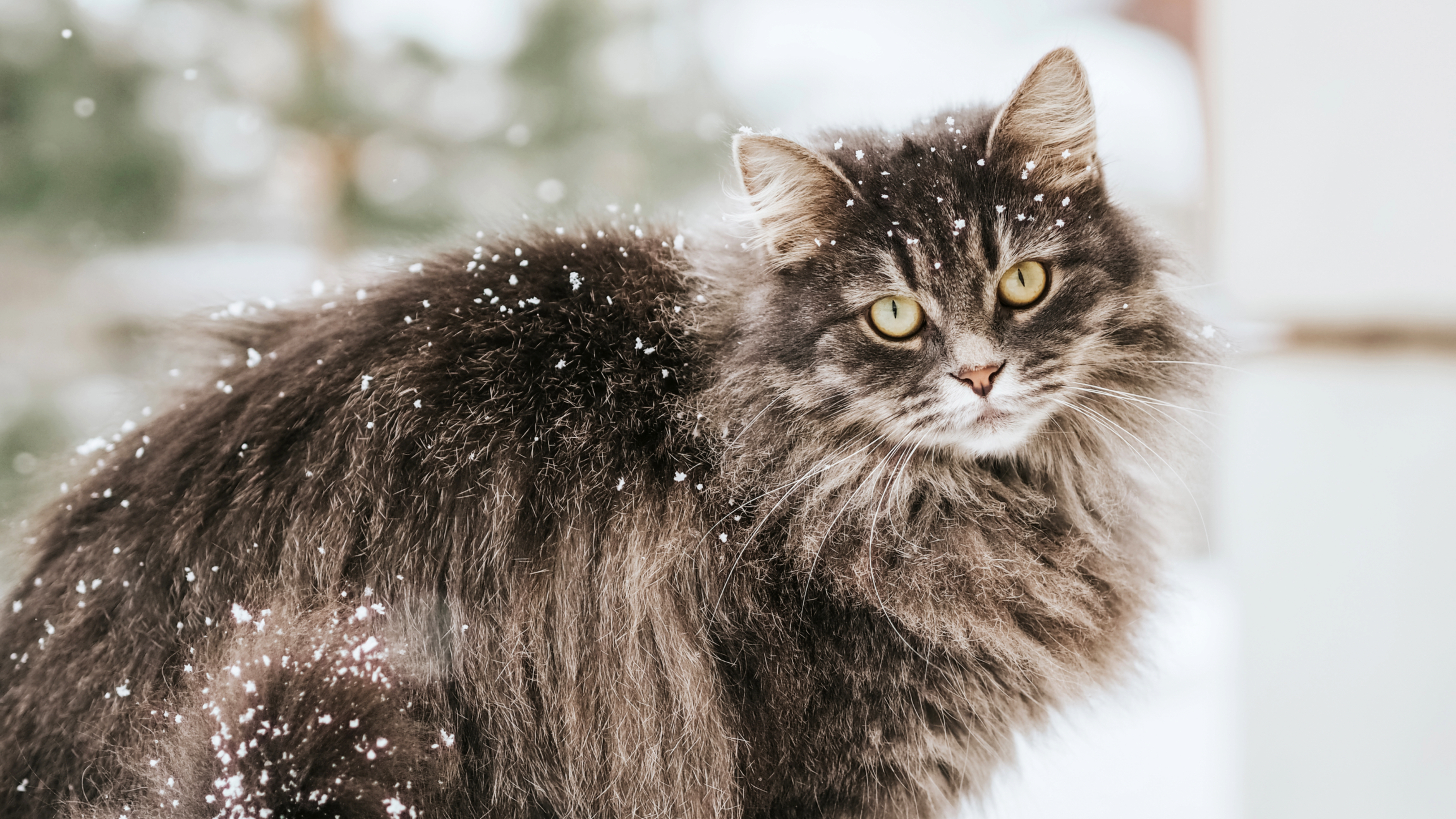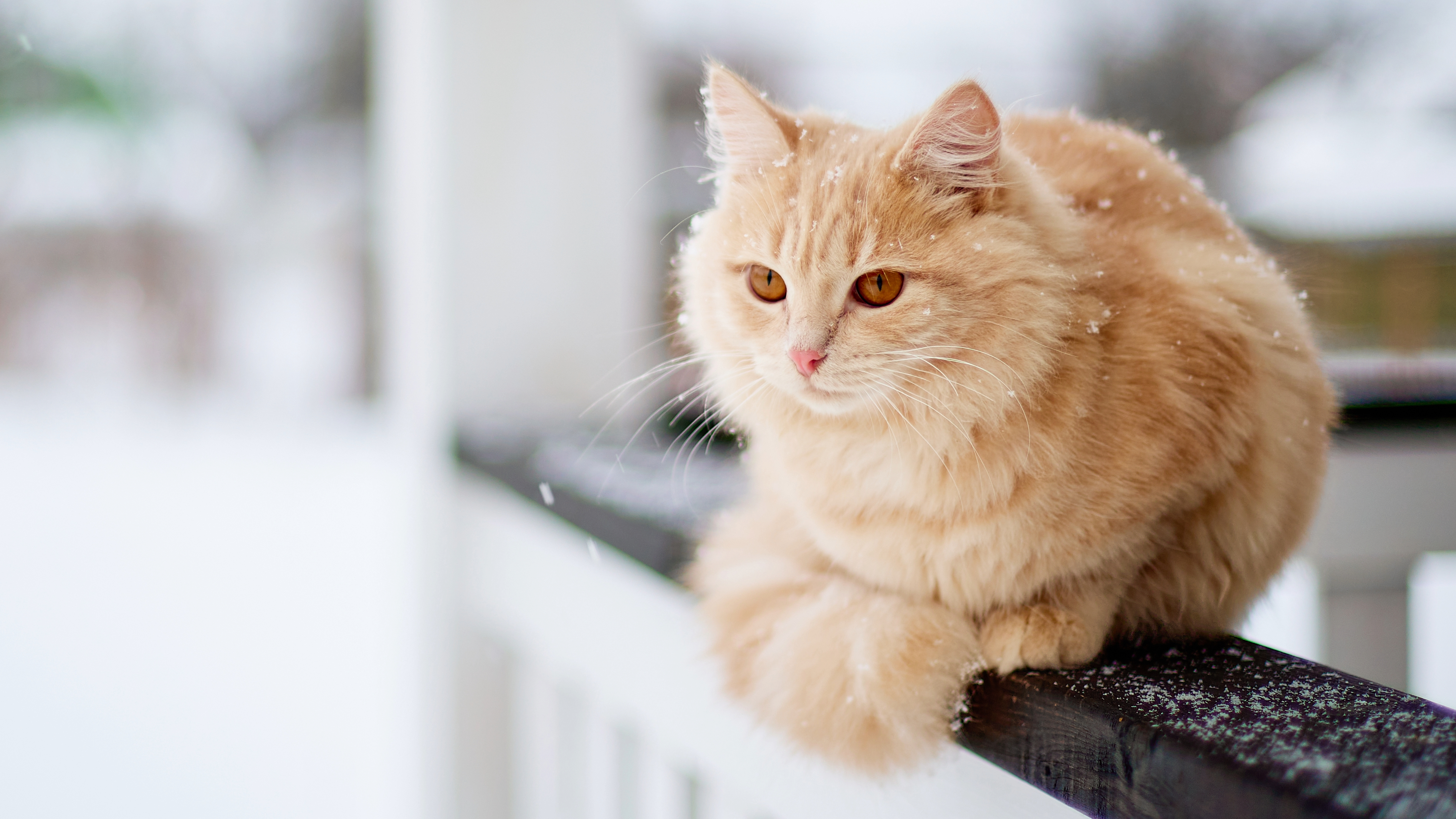
If you have a feline friend who likes to roam, you may be wondering how to keep a cat warm outside as the weather gets colder. While many cats love spending time in nature’s big backyard regardless of the season, there are certain times of the year when the temperature gets so low that being outside can pose a risk to their health.
During the colder winter months, you’ll want to take precautions to ensure your kitty is safe when they’re braving the elements. This might include investing in one of the best outdoor cat houses, having them microchipped, or fitting them with a GPS pet tracker.
Cat breeds that prefer being outdoors tend to want to continue their adventures regardless of snow, rain or freezing temperatures, so knowing how to keep them warm will make sure they can do this without compromising their wellbeing.
Below, Dr. Hannah Godfrey outlines her top tips for keeping cats toasty outside. Plus, she shares her thoughts on when it’s too cold for a cat to venture out and some simple things you can do to ensure they stay safe when they do.
How cold is too cold for a cat to be outside?
This one very much depends on how used to the cold your cat already is. Cats are pretty hardy creatures and if they spend a good proportion of their time hanging around outside, then it’s very likely that they’ll already have a good understanding of when it’s time to come back inside for some warmth. However, Dr. Godfrey has some helpful guidelines:
"It’s generally suggested that temperatures below 44.6 degrees fahrenheit (7 degrees celsius) are too cold for cats to be outside," she says. "However, cats going out for brief periods at lower temperatures is unlikely to be a problem as long as they are healthy, have good mobility, and have access to somewhere warm if desired."
If you have a kitten, senior cat or your feline friend is unwell, Dr. Godfrey says she wouldn't recommend letting them out in very cold temperatures. "Very young animals, elderly animals, or those who are unwell should not go out in temperatures less than 44.6 degrees fahrenheit. In fact, kittens should be kept much warmer since they struggle to maintain their body heat."
How to keep your cat warm outside

There are a number of ways you can ensure your cat has plenty of warmth when the temperature drops. The most common and easiest solutions are as follows:
1. Provide shelter from the cold
Giving your cat access to an outdoor space, such as a shed or garage, can be a great way to help them stay safe and warm.
"I’ve known cat owners to install a cat flap in their shed or garage and create a cozy bed in there for their cat," says Dr. Godfrey.
With that in mind, why not carve out an area of your shed or garage that is designed just for your kitty, with warm blankets and a cat bed for them to snuggle into. Try to elevate this space from the floor for maximum warmth.
You’ll also have to ensure there’s a way for them to get in and out of the space easily, which could be through a kitty door, or a crack in an existing door. If you have access for your cat, try to avoid leaving anything valuable in the space that might attract thieves.
2. Ensure they have enough food and water
In the winter, cats use a lot more calories to stay warm, which is why ensuring they have enough fuel is so important.
"Cats can’t maintain their body temperature as well if they don’t have enough energy from food or they’re dehydrated," Dr. Godfrey explains.
Provide your outdoor kitty with the best wet cat food which has been slightly warmed to take the chill off and ensure they also have a bowl of the best dry cat food as this won't freeze over in cold temperatures like wet food will.
On top of that, make sure your cat always has access to clean, fresh water and check the bowl twice a day to ensure it's not frozen.
3. Protect their paws
"Cats lose a lot of their body heat through their paws – that’s why we often put little socks on them if they have to have a general anesthetic," says Dr. Godfrey.
You can help protect your cat's paws from ice and toxic de-icing chemicals by placing some petroleum jelly on their paw pads before they go outside.
Because chemicals are widely in use during the winter months, be sure to gently clean and dry your cat's paws when they come back inside. Once you've done that, apply a little more petroleum jelly to help moisturise them.
4. Install a cat flap
Cats are generally adept at knowing when to retreat from the cold, but you can put your mind at ease by installing the best cat flap. These days, microchip cat flaps are very clever and can even be set to only allow your cat out during certain times of day too – so you can prevent them from getting out if it’s extremely cold and you’re concerned.
"Giving your cat free choice to come in or go outside is a good way to make sure that they don’t get too cold," Dr. Godfrey confirms.
5. Bring them indoors
"If the weather is forecast to be very bad, or the temperature is meant to drop, it’s a good idea to bring your cat indoors," Dr. Godfrey advises.
How to keep an outdoor cat safe

When the weather drops, then cats are at risk not only from the effects of the cold, but also from other potential dangers such as predators and getting trapped underneath cars.
There are a few things to be aware of when the cold weather sets in that should help keep your outdoor cat as safe as possible and help put your mind at ease.
1. Invest in an outdoor cat house
An outdoor cat house is a great way to make sure your cat has somewhere safe and warm to go, and is the ideal solution for those with gardens or yards.
Not only are these kitty enclaves ideal for keeping your cat warm when it’s cold, the best outdoor cat houses can also come in handy during the warmer months when your cat needs a space to cool off – so it’s a worthwhile investment.
2. Ensure they're microchipped
"A microchip is the best way to make sure you get reunited with your pet if they get lost – but it only works if you keep your details up to date!," Dr. Godfrey stresses.
3. Use a GPS tracker
The best GPS trackers for pets are a fantastic way to give yourself peace of mind that you always know where your cat is. And not only that, many will monitor their health and activity levels too, so you know how many steps your feline friend is getting in each day.
4. Know the signs of hypothermia and frostbite
Although cats are hardy creatures, they are susceptible to problems like hypothermia and frostbite, if temperatures take a serious plummet – especially if there’s a lot of rain or snow too. Make sure you’re aware of what to look out for should you find your cat in such a state.
The first sign is usually that a cat will be shivering violently in an attempt to get warm. The cat will get increasingly lethargic as frostbite sets in, with their heart rate and breathing slowing down. If you suspect your feline friend has hypothermia, Dr. Godfrey says it's important to act quickly.
"If you think your cat might have hypothermia it is an emergency. Wrap them in blankets, use a pet-safe heat source, and contact the veterinarian immediately."
5. Keep vaccinations up to date
"Outdoor cats are more at risk of infections since they’re more likely to meet cats and other animals," says Dr. Godfrey. Because of that, it's important that you keep cat and kitten vaccinations up to date as this will help to protect them when they're out and about.







